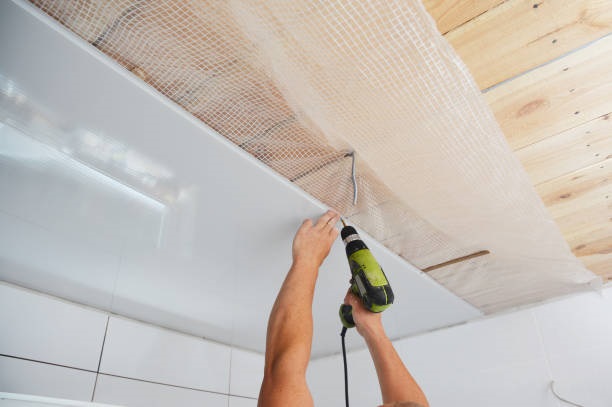What Are The Advantages Of Plaster Ceiling Panels?



False ceiling, which is also referred to as a suspended ceiling or drop ceiling these days – has gone far beyond the white painted ceiling like the old times. In many homes, it has become the point of focus. Various kinds of false ceiling materials are needed in various spaces, to match different preferences.
Various kinds of materials can be used in making attractive false ceilings. Plaster of Paris (POP) is among the materials that is used majorly for false ceiling construction. It can be obtained when gypsum is heated to a specific temperature. It can offer functional as well as aesthetic improvement. Plaster of Paris false ceilings are appealing in terms of appearance proving to be very durable and need very less maintenance. These are very amazing cold and heat insulators. With Plaster ceiling panels it is possible to hide the ugliness of conduits, ventilation ducts and structure, and also get smooth ceiling finish.
History of the Plaster Ceiling Panel
Before the 1950s, plaster was the choice for creating ceilings and walls with flawless smoothness for attractive texture. Various historical sources indicate that it was used since the days of the Roman Empire for making interior masonry smoother.
During the latter part of the 1960s, plaster went out of fashion. There was less use of plaster ceiling panels due to other materials being introduced – which offered similar kinds of finishes (but needing less skill and less amount of time for preparation or application). As the knowledge of this became more and more widespread, plaster fell out of fashion. It began to lose its popularity as a first choice for finishing.
These days, however, plaster is known to be an extremely safe material. Although plaster is not necessarily the first option when it comes to paneling or ceiling work, plaster ceiling panels are still in the market and are considered to be a viable option.
Advantages of Plaster Ceiling Panel
There are various advantages of plaster ceiling panels:
- Improved Workability – It is possible to plaster into various textures. As a construction material, it is noted for its rich textured surface and a high level of smoothness – which cannot be imitated perfectly by even the most modern materials.
- Elegance – Plaster might be regarded as a little outdated by some people or even dismissed, but it must be admitted that plaster work as an un-miss able charm which cannot be imitated by anything else. This is why plaster panels are loved by some people. It has an old-world charm and a subtle elegance, which cannot be generally found in most of the sophisticated aesthetics today.
- Due to this reason, there is a resurgence of interest in plaster work, especially the case with plaster ceiling panels.
- Mould-Ability – It can be moulded faster and easily into all kinds of intricate or simple shapes. Once plaster gets dried up, it can retain its shape and gets harder with time. This is exactly the reason why it is ideal for a static flourish such as cornices, moldings and paneling, which need to last for a long time without any compromise in detailing.
- Light In Weight – Plaster is very light in weight and can be transported as well as set up easily with comparative convenience. There is often very little requirement for a lot of manpower for installation and transportation. Naturally, the cost is less as compared to other types of paneling materials in the market. Plaster accents are also more aesthetics with intricate detail.
- Smooth Finish – When it comes to ceiling designing, Plaster of Paris is still the dominant material. It can offer a smooth finish and it is possible to mould this material to make it appropriate for any ceiling design innovation.
Plaster ceiling panels are a versatile medium which can be most appropriate for modern homes, where the interior ambience is brightened by warm cove lighting. It can be used along with other false ceiling materials such as glass or wood to get a unique contemporary appeal.



